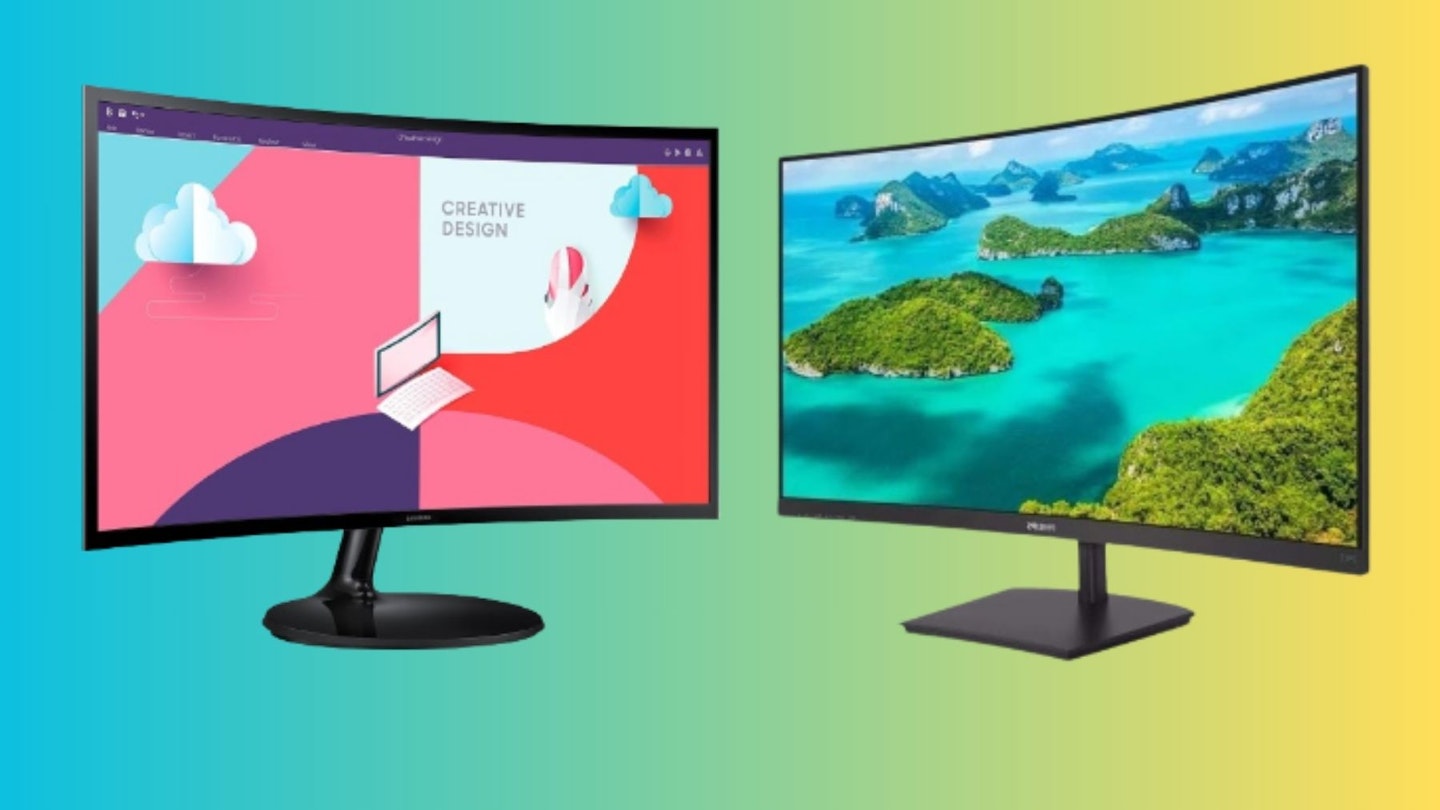There are plenty of great monitors out there, from the standard design to an ultrawide build, but how does a curved monitor compare and what benefits do you get from such an unusual shape?
A curved monitor has so much to offer that we think they're worth considering if you're in the market for upgrading your setup. They're kind on the eyes, so you can keep them healthy when working from home.
Curved monitors differentiate themselves from standard monitors by their design, curving in at the sides to form a soft bend. This isn't an exclusive feature either; you can still find ultrawide curved monitors if you really want to deck out your desk.
We're here to tell you the great benefits that using a curved monitor has and why you might want to go for one the next time you're looking for a monitor, while also noting the cons that come along with one.
Immersion and focus
One of the best aspects of a curved monitor is how the shape matches our eyes and improves immersion. Our field of vision isn't flat, so a curved screen is better able to produce a sense of 3D space. This has clear benefits for first-person video games, but it makes action scenes in movies and TV shows a lot easier to track.
Since a curved monitor matches our field of vision better than a flat screen, it's typically easier to focus on what you're looking at with one. With a flat screen, the entire image has the same sense of depth from most angles, so our eyes attempt to take it all in, whereas they focus in on the centre of a curved screen. As such, if you find yourself easily distracted, you might be surprised by how a curved monitor can improve your efficiency.
To follow on from that, a curved monitor often assists in multitasking. In instances where you have multiple windows and programs open at once, your eyes will be better able to follow along without tiring. Just like with any 3D space, you'll be aware of what's in your peripheral view without requiring contrast tracking.
Comfort and your eyes
We've mentioned a few times now about how a curved monitor makes things easier on your eyes, and that really is an excellent feature. Anyone who works in front of a screen for most of the day understands the struggles of eye strain. By guiding your sight and matching your natural depth perception, your eyes need to work much less for the same results, and that's always a blessing.
One of the significant struggles with a flat monitor is how it handles lighting. It's comparable to a TV being hit by sun rays; it's easy for bad lighting to affect your viewing and by extension make it harder to see what's on the screen. Thankfully, a curved build is able to handle varying lighting better and reduces glare.
Curved monitors tend to cost a bit more than regular ones; however, this also means they often benefit from improved specs and features. There are plenty of 4K curved monitors, and it's not uncommon for these monitors to sport great refresh rates, minimal response times, and expanded anti-glare and flicker-free features.
Shortcomings
Curved monitors aren't without their flaws. For starters, let's talk about the shape. Even smaller curved monitors take up notably more space than a standard design does. As such, you need to take that into account for your desk space.
Our big issue with curved monitors is that they often lack much adjustability. Don't expect to be able to rotate them or adjust the height however you please; with a few exceptions, what you see is what you get.
While curved screens are fantastic for immersion and plenty of content, not everything suits it. Much like how some media is still best viewed on a CRT, some shows (usually older ones) might feel a bit off on anything that isn't flat.
Lastly, for those who have primarily used flat monitors for years, it will take some time to adjust to using a curved one. Some users even feel a bit motion-sick, so it's best to give yourself a trial period with a curved monitor and see how your experience goes.
We believe that curved monitors are a fantastic addition to any desk setup, able to ease your eyes and improve your overall viewing. That said, it's worth factoring in whether the shortcomings are likely to bother you. Even so, a curved monitor is a great upgrade over a flat design in most cases and they get our solid recommendation for anyone working from home or struggling with eye strain.
Kyle Purves is a Commercial Content Writer for What’s The Best, with an avid interest in all things gaming and tech.
They’re well-versed in reviewing a variety of tech products, with a soft spot for speakers and earphones. They’re also no stranger to hunting down the best savings, always wanting to get the best deal possible. Outside of work, they can often be found playing through an RPG, listening to Japanese noise rock, or trying to catch up with their ever-expanding list of shows and anime to watch. If possible, they try to play Dungeons and Dragons a couple of times a week, but getting six adults to be free at the same time is easier said than done.
Subscribe to the What’s The Best Newsletter to keep up to date with more of the latest reviews and recommendations from the rest of the What’s The Best team.
